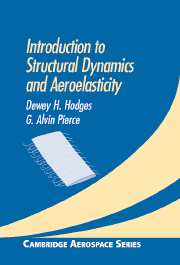3 - Static Aeroelasticity
Summary
I discovered that with increasing load, the angle of incidence at the wing tips increased perceptibly. It suddenly dawned on me that this increasing angle of incidence was the cause of the wing's collapse, as logically the load resulting from the air pressure in a steep dive would increase faster at the wing tips than at the middle. The resulting torsion caused the wings to collapse under the strain of combat maneuvers.
A. H. G. Fokker in The Flying Dutchman (Henry Holt and Company, 1931)The field of static aeroelasticity is the study of flight vehicle phenomena associated with the interaction of aerodynamic loading induced by steady flow and the resulting elastic deformation of the lifting surface structure. These phenomena are characterized as being insensitive to the rates and accelerations of the structural deflections. There are two classes of design problems that are encountered in this area. The first and most common to all flight vehicles is the effect of elastic deformation on the airloads associated with normal operating conditions. These effects can have a profound influence on the performance, handling qualities, flight stability, and structural load distribution. The second class of problems involves the potential for static instability of the structure that will result in a catastrophic failure. This instability is often termed “divergence” and can impose a limit on the flight envelope.
The material presented in this chapter provides an introduction to some of these static aeroelastic phenomena.
- Type
- Chapter
- Information
- Introduction to Structural Dynamics and Aeroelasticity , pp. 80 - 113Publisher: Cambridge University PressPrint publication year: 2002
- 1
- Cited by

